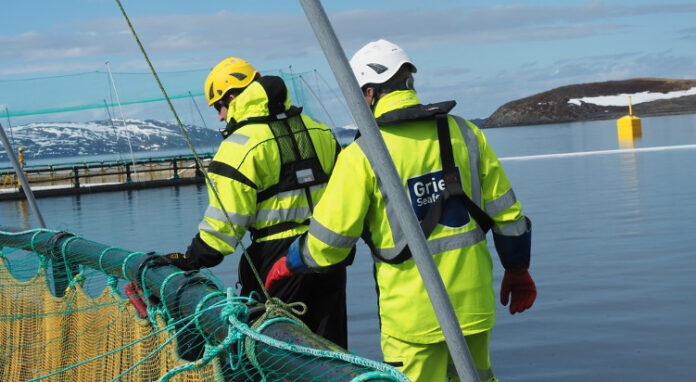The Norway fish farmer delivered an operational EBIT of NOK 453 million (€44.3 million) in the first quarter on Friday morning, up from minus NOK 16 million (€1.6 million) in the same period last year.
This is somewhat better than the analysts’ advance tips, which were NOK 438 million (€42.8 million), according to Infront.
The harvest volume was 16,900 tonnes during the period, which gives an operational EBIT per kg of NOK 26.8 (€2.6).
The results were driven by high prices, improved biological performance and improved price achievement through close coordination between farming and sales.
Improved
“In Finnmark, the impact from winter sores was significantly lower compared with last year, which partly offset the effect of low average harvest weights and harvests towards the beginning of the quarter with lower spot prices when achieving prices. Rogaland profited from a favorable harvest profile throughout the quarter, combined with improved underlying costs. British Columbia delivered solid results, driven by good price achievement from a favorable harvest profile and VAP premium, in addition to improved breeding costs from better biological conditions and increased survival,” Grieg wrote in a statement.
In Newfoundland, freshwater production has developed according to plan. The fish are fresh and growing well, and the first release is planned for May.
“The first quarter of 2022 has been different from anything I have seen before in my 26 years in the aquaculture industry. The market has been incredibly strong, with historical prices across the board. Grieg Seafood achieved the best result we have ever done in a first quarter,” CEO Andreas Kvame said.
“All our production regions performed well in the quarter due to improvements in biological control and increased survival. In Finnmark, we were significantly less affected by winter sores this year compared with 2021, as a result of successful mitigation measures. We also see a positive effect from our integrated sales organization, which since its establishment has changed its focus in sales from margin to the company’s profit,” Kvame continued.
Affected
Global harvesting of Atlantic salmon in 2022 is expected to be reduced by one percent in total
large regions with declining volumes.
“The Covid-19 pandemic has affected the salmon market over the past two years, with a shift in demand from HoReCa to the retail segment. The HoReCa segment is strengthening, and it also appears that the pandemic has increased demand in the retail segment, as consumers have become accustomed to cooking salmon at home. Without supply growth in 2022 and prospects for continued strong demand, we expect a strong market going forward.”
The company has so far capitalized on high exposure to the spot price. Grieg Seafood aims for an annual contract share of 20-50 percent. The estimated contract share for the Norwegian operations in the second quarter is 15 percent, and 20 percent for the whole of 2022. For 2022, the company estimates that around 5-10 percent of the harvest volume will be sold as processed products.
Grieg Seafood expects a harvest of 22,300 tonnes in the second quarter and 90,000 tonnes for the whole of
2022.

